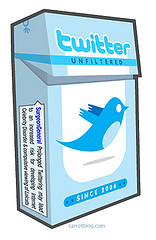 Back in 2009, Twitter and LinkedIn debuted the ability to synch between their platforms. It was the beginning of LinkedIn’s efforts to liven up its offerings by allowing Twitter and Facebook posts to automatically update in a user’s stream.
Back in 2009, Twitter and LinkedIn debuted the ability to synch between their platforms. It was the beginning of LinkedIn’s efforts to liven up its offerings by allowing Twitter and Facebook posts to automatically update in a user’s stream.
Many people loved being able to have all their tweets post to the business platform. Others, and I must confess I am one of them, found themselves relying on that stream less as it became more and more filled with pictures of felines and descriptions of people’s meals. There was a very distinct shift in the signal-to-noise ratio.
Then, last June, Twitter decided to end that relationship. Kate Freeman of Mashable speculated about the cause in her coverage at the time:
It’s possible, though doubtful, that Twitter wants to separate itself from the business networking company after the recent password breach in which 6 million LinkedIn passwords were stolen.
LinkedIn was recently slapped with a $5 million lawsuit by a user who claims LinkedIn deceived its more than 160 million members by having a security policy ‘in clear contradiction of accepted industry standards for database security.’
Another possible reason is that Twitter and LinkedIn couldn’t come to an agreement over potential advertising revenue. In the last few months, Twitter has aggressively started pushing forward with initiatives that highlight partner content and feed its sponsored and promoted Tweet ecosystems. Twitter may want to retain the value of its feeds on its own site, without giving that content to a potential competitor for ad dollars.
On a personal basis, I agree with the latter. I’d be willing to bet money that the reason behind the decision was fueled by a desire to keep profits in-house. Unfortunately for Twitter, its attempts have instead provided a titanic boost to Facebook while reducing its own presence and exposure at the same time. All in all, Facebook links displayed in LinkedIn experienced a 1,000% increase in exposure now that the flood of tweets is no longer consuming the stream.
Anita Li, also at Mashable, takes note of PageLever‘s findings, which agree with my assessment:
‘The spike happened because without Twitter, there is now a significantly lower volume of content in the LinkedIn News Feed, and therefore less competition for clicks and attention,’ Brendan Irvine-Broque, PageLever’s director of growth, tells Mashable in an email. ‘So any non-Twitter content (including links to Facebook Pages and Page Posts) is performing much better than before.’
Irvine-Broque adds that the spike happened ‘immediately after the change.’
Trying to make the right decision for one’s company is always a hard thing to do. In an effort to keep other companies from eating into their profits, Biz Stone and his crew have provided a boost to the competition. Of course, LinkedIn does not drive that much traffic compared to other social platforms, but, even so, the leap in accessibility is prodigious.
Twitter has been restricting access to its API for a while now. Only time will tell if that is a good long-term strategy. Do you think the microblogging service is taking a misstep, or do you believe its strategy will be proven valid over time? Let us know in the comments!